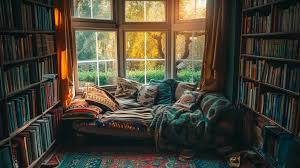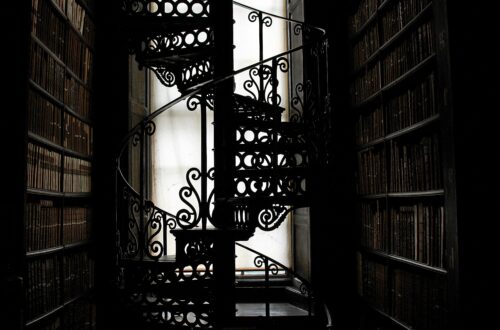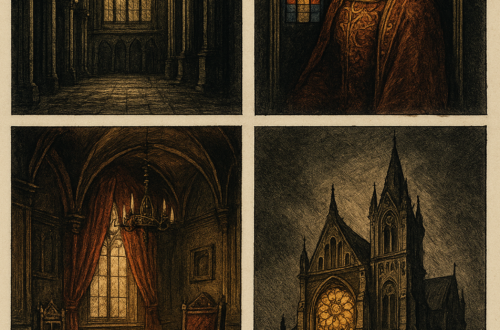
In the ever-evolving world of interior design, certain styles stand the test of time, captivating hearts and homes with their nostalgic charm and timeless elegance. Vintage and retro decor are two such styles that have made a remarkable comeback, offering a delightful blend of history, character, and personality. Whether you’re drawn to the elegance of the early 20th century or the bold, playful aesthetics of the mid-20th century, vintage and retro decor provide a treasure trove of inspiration. Let’s explore the defining characteristics, key elements, and tips for incorporating these styles into your home.
Understanding Vintage and Retro Decor
While often used interchangeably, vintage and retro decor have distinct characteristics that set them apart.
Vintage Decor typically refers to styles from the early 20th century up to the 1950s. It encompasses a wide range of influences, from the delicate, ornate details of the Edwardian and Victorian eras to the streamlined elegance of the Art Deco period. Vintage decor often features rich materials, intricate craftsmanship, and a sense of history.
Retro Decor, on the other hand, covers the period from the 1950s to the 1980s. It is characterized by bold colors, playful patterns, and an overall sense of fun and innovation. Retro decor often includes elements of mid-century modern design, with its clean lines, organic shapes, and emphasis on functionality.
Key Elements of Vintage Decor
1. Antique Furniture and Accessories: Vintage decor thrives on authenticity. Look for antique furniture pieces, such as ornate wooden dressers, clawfoot tables, and tufted armchairs. Accessories like vintage clocks, chandeliers, and brass candlesticks can add an extra layer of charm.
2. Rich Fabrics and Textures: Incorporate luxurious fabrics like velvet, silk, and brocade. Layer these materials with lace doilies, embroidered cushions, and heavy drapes to create a sense of opulence and warmth.

3. Classic Color Palettes: Vintage color schemes often include muted tones like dusty rose, sage green, and cream, complemented by deeper shades like burgundy, navy, and forest green. These colors evoke a sense of nostalgia and sophistication.
4. Intricate Patterns: Floral prints, damask, and toile patterns are quintessential elements of vintage decor. Use these patterns on wallpaper, upholstery, and textiles to add visual interest and a touch of romance.
5. Decorative Details: Pay attention to the small details that define the vintage aesthetic. Look for furniture with carved woodwork, decorative moldings, and brass hardware. Incorporate vintage mirrors, porcelain figurines, and framed antique prints to complete the look.
Key Elements of Retro Decor
1. Bold Colors and Patterns: Retro decor is all about making a statement. Embrace vibrant colors like teal, mustard yellow, avocado green, and burnt orange. Mix and match geometric patterns, polka dots, and psychedelic prints to create a lively, energetic atmosphere.
2. Mid-Century Modern Furniture: Invest in iconic mid-century modern furniture pieces, such as Eames chairs, Noguchi tables, and Arne Jacobsen’s Egg Chair. These designs are characterized by clean lines, organic shapes, and a focus on functionality.
3. Playful Accessories: Add a touch of whimsy with retro accessories like lava lamps, rotary phones, and vintage posters. Look for unique, quirky items that reflect the innovative spirit of the era.
4. Space-Age Inspiration: The retro period saw a fascination with space exploration, reflected in design elements like atomic starbursts, sputnik chandeliers, and futuristic shapes. Incorporate these motifs to add a sense of adventure and innovation.
5. Mixing Materials: Retro decor often combines different materials, such as plastic, metal, and glass. Look for furniture with metal legs, plastic chairs, and glass tabletops to capture the eclectic vibe of the era.

Tips for Incorporating Vintage and Retro Decor
1. Start with a Focal Point: Choose a statement piece, whether it’s a vintage sofa, a retro sideboard, or an antique chandelier, and build your design around it. This will help create a cohesive look and give you a foundation to work from.
2. Blend Old and New: Mix vintage or retro pieces with contemporary items to create a balanced, eclectic look. This prevents your space from feeling like a museum and adds a personal touch.
3. Hunt for Treasures: Explore antique shops, flea markets, and thrift stores for unique finds. Don’t be afraid to repurpose or upcycle items to fit your decor vision.
4. Layer Textures and Patterns: Combine different fabrics, materials, and patterns to add depth and interest to your space. Layering textiles like rugs, cushions, and throws can create a cozy, inviting atmosphere.
5. Pay Attention to Detail: Small details can make a big impact. Swap out modern hardware for vintage-style handles and knobs, and incorporate period-appropriate lighting fixtures to enhance the overall aesthetic.
6. Create a Gallery Wall: Display a collection of vintage or retro art, photographs, and mirrors to create a focal point and add visual interest to your walls.
7. Be Mindful of Scale: When mixing different eras, pay attention to the scale and proportion of your furniture and accessories. This will help maintain a harmonious and balanced look.
Conclusion
Vintage and retro decor offer a captivating journey through time, allowing you to infuse your home with personality, history, and charm. By understanding the defining characteristics of each style and incorporating key elements, you can create a space that celebrates the beauty of the past while remaining fresh and relevant. Whether you prefer the elegance of vintage decor or the playful spirit of retro design, embracing these timeless styles can transform your home into a unique and inspiring haven.
Thanks for reading.



